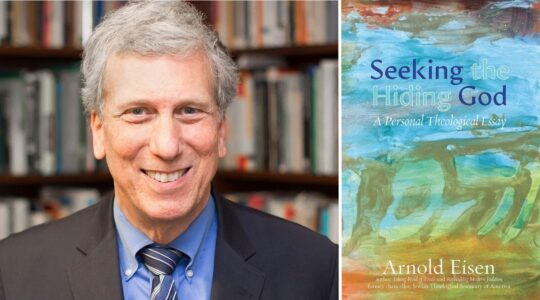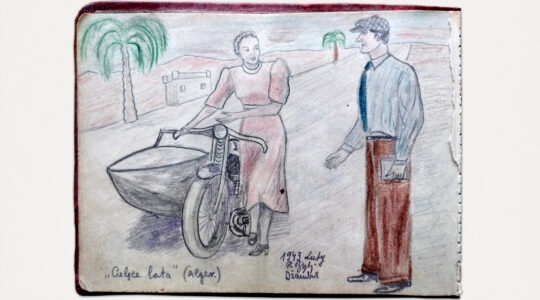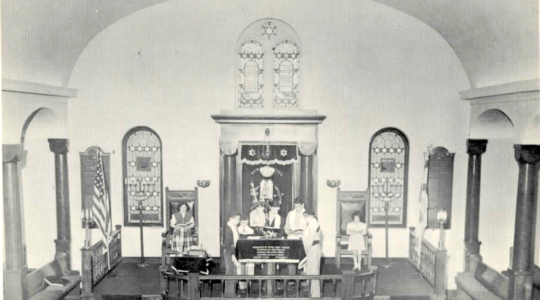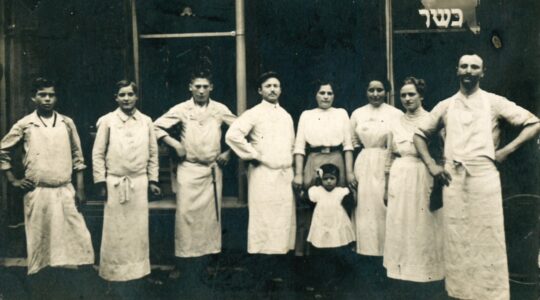Jerusalem — Karen Mosquera, the latest victim of terrorism in Israel, was buried in world’s most revered Jewish cemetery on Monday — the Mount of Olives in Jerusalem. She was laid to rest by a charedi burial society, and mourned at the funeral by large Orthodox crowds from Jerusalem and Bnei Brak.
But despite the psalms, the prayers and the chevra kadisha (burial society), she wasn’t Jewish. Or at least, she wasn’t Jewish in the eyes of the State of Israel.
Mosquera, a 22-year-old Ecuadorian who was killed by a Palestinian driver at a light rail station here last week, was in Israel to convert to Judaism. Her story was a moving one: she discovered that she was descended from conversos — Jews who had been forced centuries ago to become Catholics. The closing of a huge historic circle, conversion to Judaism, was the end of her long journey of rediscovering her ancestors’ faith.
Mosquera had recently gone through a conversion in Bnei Brak, arguably the most religious city in Israel, under Nissim Karelitz, one of the most celebrated charedi rabbis of this generation. But because it wasn’t the state’s centralized Conversion Authority, Israeli officialdom considers her to be non-Jewish.
Several Israeli rabbis explained that Rabbi Karelitz operates one of a handful of beit dins, or religious courts, in Israel that cater to foreigners seeking conversion. Usually, the visitors return home after the process and can present to their local religious authorities proof from the Israeli Beit Din that their conversion is kosher. In a small number of cases — two of them after the converts’ advocacy organization ITIM turned to the Israeli Supreme Court — the Chief Rabbinate has accepted them to go through a second ritual ceremony (brit milah or the letting of blood for a male, mikvah for a female) and be fully recognized by the state. Normally, however, they are not permitted to do this.
Instead, they tend to be stuck in an impossible situation whereby they cannot start the state-approved conversion process because it is closed to non-citizens, and cannot become citizens because the state deems them non-Jewish. Still, some stay in Israel as illegal immigrants — living and practicing Judaism in the Jewish state, but in the kind of secrecy that conversos became accustomed to, lest they be found by the Jewish state’s immigration officials.
An Israeli law states one must first become a citizen of the state before a conversion by the Chief Rabbinate is permitted, so as to ensure the legitimate motives and authenticity of would-be citizens.
There is a logic to Israel’s refusal to convert non-citizens. It stems from a fear that huge numbers of people who want citizenship for economic reasons, such as African asylum seekers, could obtain it through conversion. But Israel’s reluctance to make use of a special committee that can grant exceptions to this is putting it on the sidelines of Jewish history unfolding today. It only takes a little common sense for officials to see that a descendent of conversos is seeking to become Jewish for genuine reasons, and put the state’s process at her disposal.
As a result of Mosquera’s limbo-like Jewish status — converted as a foreigner but not recognized by the Israeli government as a citizen, she would have been accepted as Jewish in any synagogue in the world but could not, for example, marry in Israel.
The mayor of Jerusalem, Nir Barkat, told Mosquera’s family at the funeral that they are “part of the Jewish big family” on the merit of their daughter.
Amidst the confusion, the real question here is why people like Mosquera are turning in growing numbers to charedi beit dins, or religious courts, when the state decided two decades ago to create a central Conversion Authority in order to make conversion accessible? It viewed user-friendly conversion as a logical follow-up to mass immigrations of people of Jewish descent under the Law of Return.
Support the New York Jewish Week
Our nonprofit newsroom depends on readers like you. Make a donation now to support independent Jewish journalism in New York.
But the road to accessing its services is so long and bureaucratic, it operates so inefficiently, and its work has been so dogged by controversy that would-be converts are tending more and more towards private charedi beth dins — either while they await a state conversion or instead.
The irony is mind-boggling. The ultra-Orthodox have long criticized the Conversion Authority, claiming that it makes conversion too easy — its religious standards are too lax. Yet today, people are choosing stricter charedi conversions because, on a practical level, they are easier to access.
The State of Israel and its Conversion Authority should have rolled out a red carpet for Mosquera. What an amazing story, a converso in return. Her ancestors, vulnerable and without protection, were forced by non-Jewish authorities to abandon their faith, yet today, in freedom and with Jewish identity buoyant thanks to the existence of Israel, she makes the move in the other direction.
And yet, she did not get her embrace from the institutions of the Jewish state, the state which champions the “ingathering of the exiles,” but rather found her route to Judaism in a charedi community that rejects Israel’s historic significance in the story of the Jewish People.
The State of Israel mourned a gentile on a tourist visa. The charedi newspaper Hamodia mourned a “righteous convert” and lauded her personal journey.
A plan to reinvigorate the Conversion Authority by allowing for more state-approved conversion centers in Israel to unstick the official process from bureaucratic gridlock is taking shape. Legislation to facilitate this passed its first Knesset reading this week. But the ruling Likud Party has withdrawn its support, no doubt as a sop to religious parties as Prime Minister Netanyahu tries to bolster his standing with them. That means the legislation looks poised to fall — and the Jewish state will sit on the sidelines in more and more stories of return, like Mosquera’s.
The New York Jewish Week brings you the stories behind the headlines, keeping you connected to Jewish life in New York. Help sustain the reporting you trust by donating today.




